Top > Embedded Software Tools > MC-Verifier

MC-Verifier
: Integrated Model/Code Back-to-Back Test Tool
Back-to-Back (B2B) Test Tool for meeting ISO 26262 requirements
Model-to-Model, Model-to-Software, Model-to-Target-Code B2B Testing
Identify test error location (subsystem) on Simulink model
Trace test errors over time on Simulink model
Code Coverage (Statement, Branch, MC/DC)
Overview
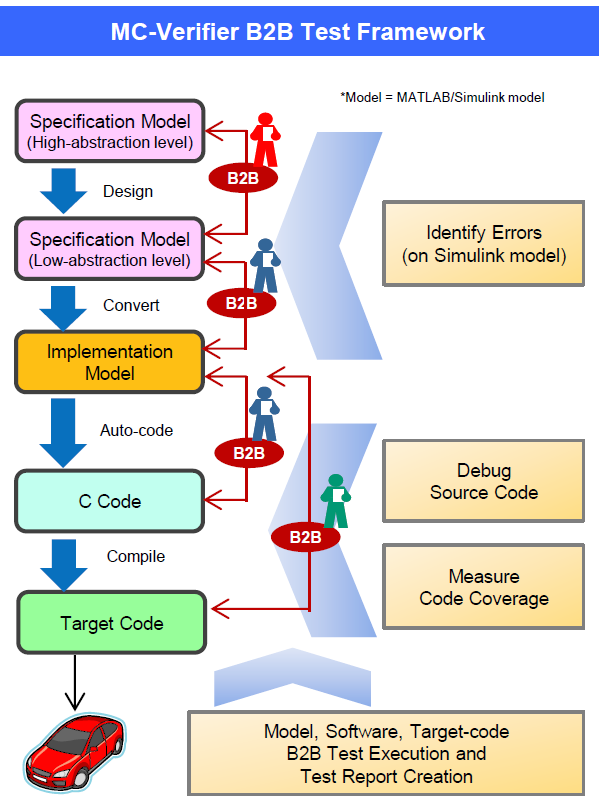 “MC-Verifier” is an integrated test tool for performing model-based development Back-to-Back testing. Debug and verify consistency between model, software, and target code implementation at a variety of development phases.
“MC-Verifier” is an integrated test tool for performing model-based development Back-to-Back testing. Debug and verify consistency between model, software, and target code implementation at a variety of development phases.
[List of Terms]
MC= Model and Code
B2B = Back-to-Back
MIL = Model In the Loop
SIL = Software (C code) In the Loop
PIL = Processor (Target object code) In the Loop
* Figure : Click to enlarge
Features
Model, Software & Target Code B2B Testing, Evaluation & Reporting
MC-Verifier can perform B2B testing with models (MIL), software (SIL), & target code (PIL). Evaluate B2B test results to detect and report error locations. Import test cases created from other MBD tools for B2B testing.
Note: GAIO’s own MPU simulator is built-in for target code testing. Test hardware is not required.
Identify Error Location on Simulink model
The output values of all model subsystem signals, and all code variables are recorded during testing. After testing, the model signal and code variable output values can be analyzed over time in order to locate errors.
The acceptable error range can be specified by percent. Subsystems that exceed the acceptable error range will be highlighted on the Simulink model in order to efficiently locate and correct errors. This feature for locating errors even works for models that include feedbacks.
Code Debugging Features
Code debugging features included with the MPU simulator can be used to analyze errors for model-to-target-code tests. Set breakpoints in the code, verifying changes in variable values, register values, memory values, etc.
MATLAB/Simulink Integration
MC-Verifier is integrated with MATLAB/Simulink. MC-Verifier features can be executed from the MATLAB/Simulink GUI, command-line or MATLAB scripts.
Code Coverage
Code coverage (statement, Branch, MC/DC) can be measured for model-to-target-code tests. Detect code structure issues through code coverage testing and fulfill ISO 26262 code coverage requirements.
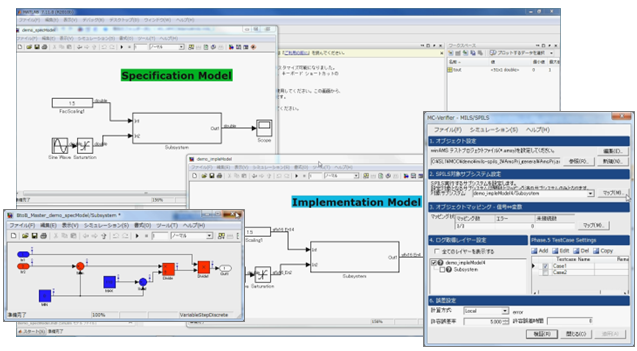
MC-Verifier B2B Test Use Cases
High-Abstraction Level & Low-Abstraction Level Specification Models
Perform B2B testing with the high-abstraction level and low-abstraction level specification models for verification. Evaluate behavior consistency between models when creating control specification.
Control System Designers (MIL to MIL)
MATLAB/Simulink algorithm design
Evaluate behavior consistency between models
Specification Model, Implementation Model & C Code
Perform B2B testing with the low-abstraction level specification model, implementation model and auto-generated code for verification. Detect C code generation related issues.
Code Developers (MIL to MIL to SIL)
Floating point to fixed point conversion
Model modifications for code generation
Detect auto-coder related issues
Implementation Model & Target Code
Perform B2B testing with the implementation model and the target code during the implementation phase to evaluate in a target environment as recommended by ISO 26262. Detect MPU structure, cross compiler optimization and other target code related issues.
Code Implementers and Testers (MIL to PIL)
MPU type and compiler related issues, rounding errors
Code coverage measurement
ISO 26262 compliant testing reports
MC-Verifier Features (In development, actual features may differ)
MATLAB/Simulink Integration
MC-Verifier is integrated with MATLAB/Simulink. MC-Verifier features such as model, software, target-code B2B testing and report generation can be executed from the MATLAB/Simulink GUI, command-line or MATLAB scripts.
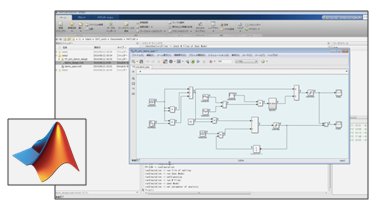
Analyze the B2B Test Error Range
Evaluate the error range over time for model signal lines and code variable values. Set the allowed error range by percent, then graph and highlight items that exceed the allowed error range.
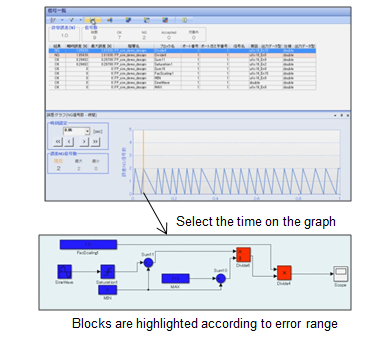
Code Debugging
Target code B2B tests are executed on GAIO’s MPU simulator (Instruction Set Simulator). Test and debug the target code without needing actual hardware. Set breakpoints in the code, verifying changes in variable values, register values, memory values, etc.
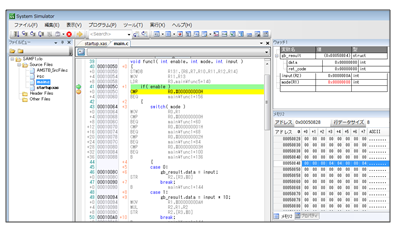
Error Location Analysis
The output values of signal lines and code variables for the selected subsystem are recorded during testing. After testing, signal line and code variable values can be analyzed over time in order to locate errors. This feature for locating errors even works for models that include feedbacks.
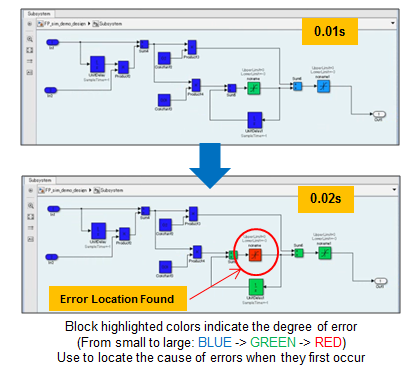
Code Coverage
Code coverage (statement, Branch, MC/DC) can be measured for model-to-target-code tests. In this way, detect code structure issues through code coverage testing and fulfill ISO 26262 code coverage requirements.
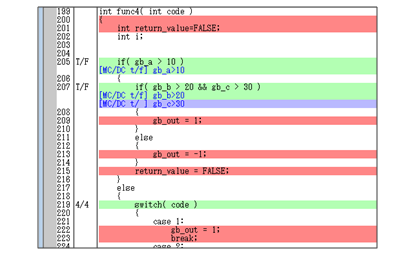
Test Reports
Test reports including B2B test results, tested subsystem/function list and code coverage results can be output to XML, HTML, CSV, XLS(X) formats. Easily create test reports needed for functional safety certification.
Import Test Cases from other MBD Tools
Test case data created from other MDB tools can be easily imported for B2B testing in CSV, M-file and other general formats.
